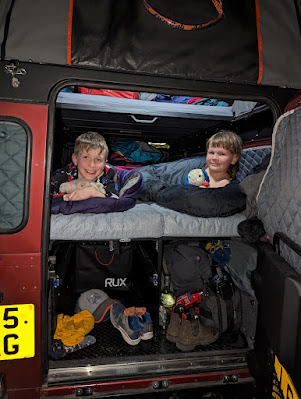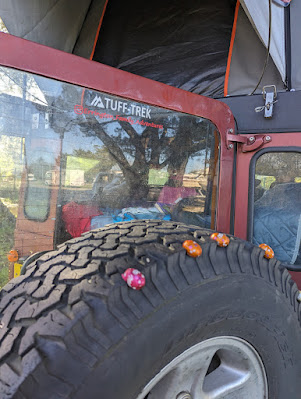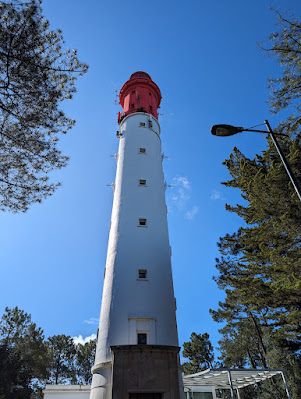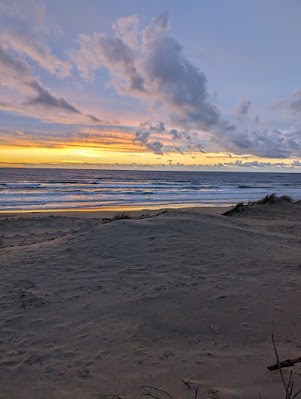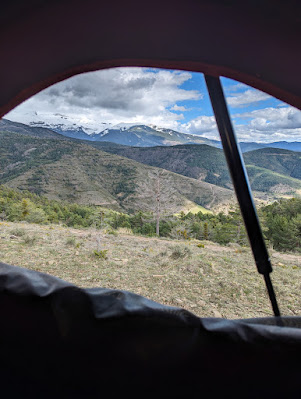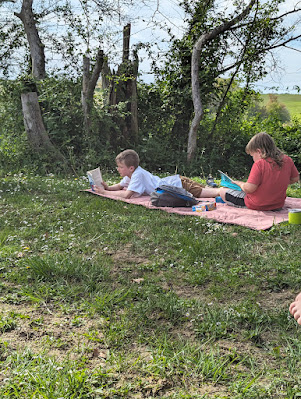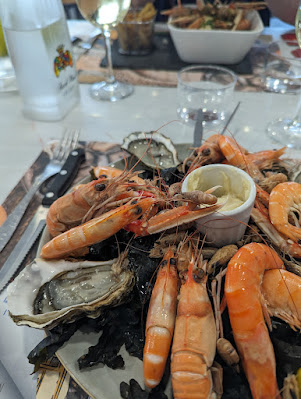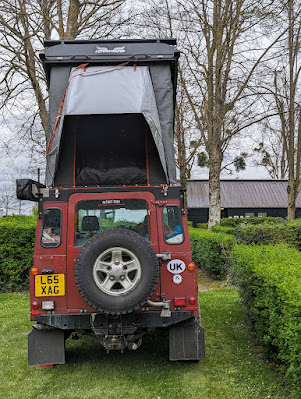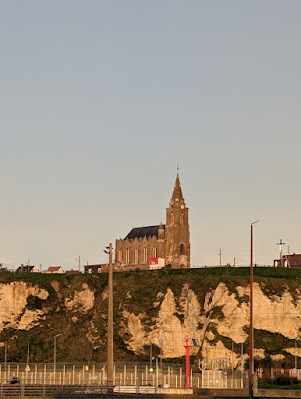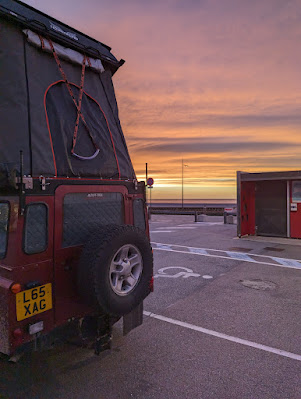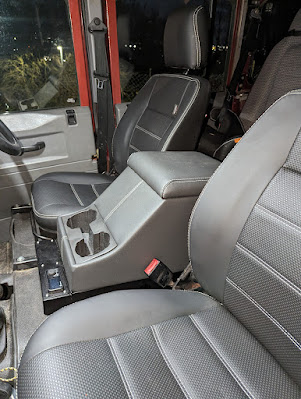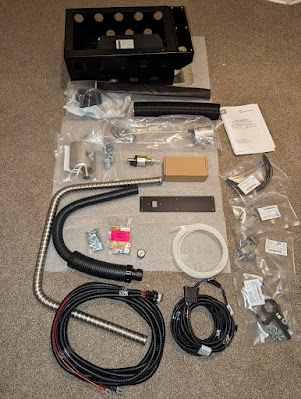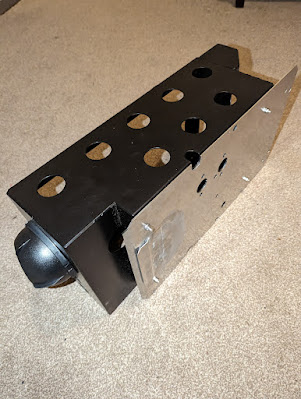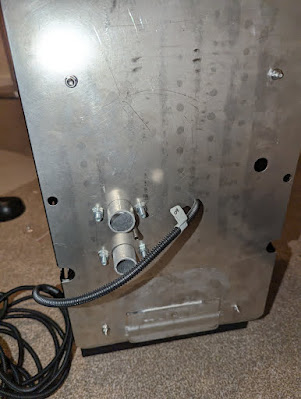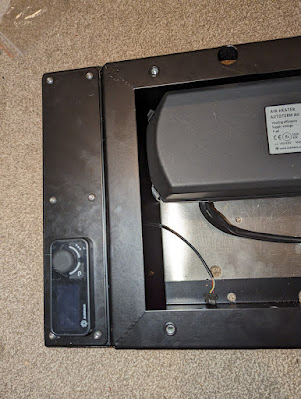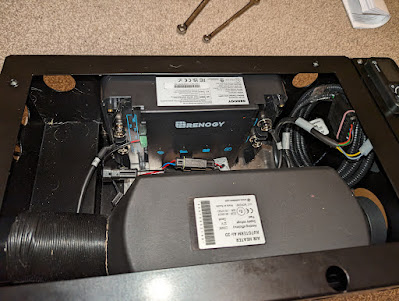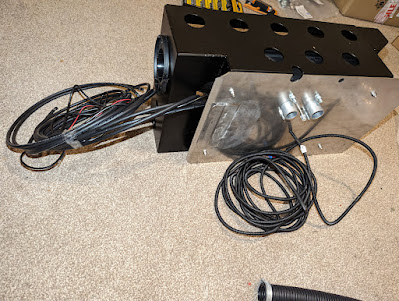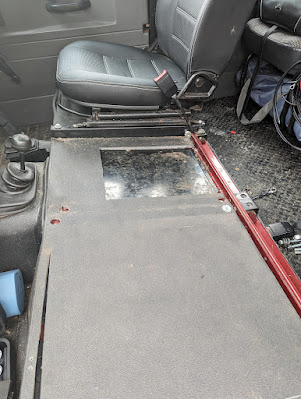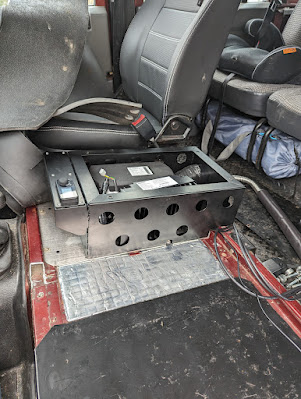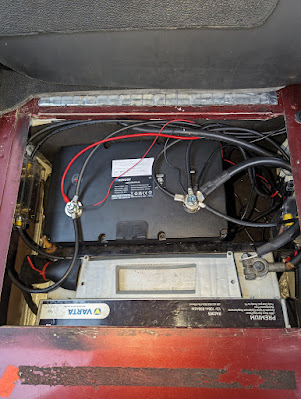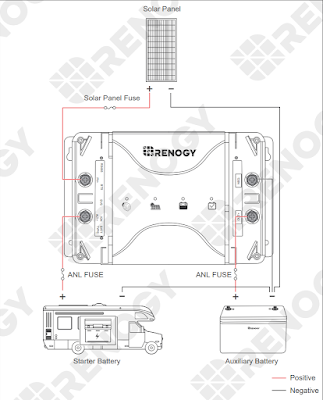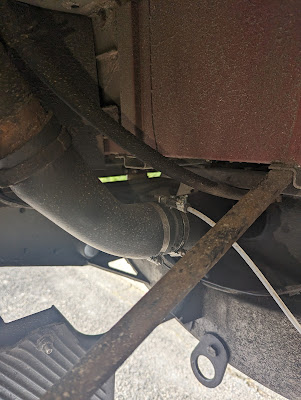One of our favourite things about living in Victoria, BC, was being able to explore beautiful Vancouver Island and the Gulf Islands, but our love of islands didn't start in Canada. It actually started in Scotland on the Isle of Jura.
I (R) have been visiting Jura for almost 40 years now, and Sarah has been joining me for more than 20 years. It's one of our favourite places, and we even got married there on the beach at Corran Sands in 2012.
One of the best things about being back in the UK, is being able to get up to Jura regularly. This is our third trip up in the last 6 months!
About the Isle of Jura
Jura is an island in the Inner Hebrides, off the west coast of Scotland.
Despite being the 8th largest of the Scottish islands (about 30 miles long and 7 miles wide), it is only the 31st largest in terms of population with around 200 permanent residents. The residents are vastly numbered by Red Deer, with a fairly steady population of around 5000, and in fact the name Jura is thought to derive from the Old Norse word Dyrøy meaning "deer island".
The island is dominated by three large peaks, known as the Paps of Jura, which make for a distinctive silhouette from the mainland and also from neighbouring Islay. Only the South and East coasts of the island are inhabited, leaving the West coast as a beautiful wilderness which is only accessible on foot or by boat.
With its small, friendly population and remote feeling, Jura is a magical place which really gets under your skin and many visitors return on a regular basis.
Getting to the Isle of Jura
The Isle of Jura was described as "ungettatable" by George Orwell when he was writing his famous novel '1984' on Jura. Fortunately it's not that difficult these days, and there are a number of options to get here, but it does take a bit of planning! The major options are listed below, but get in touch with us if you need help planning your journey.
Jura Passenger Ferry
This is our favourite way to get to Jura. The
Jura Passenger Ferry crosses between Tayvallich, on the mainland, and Craighouse on Jura. It's the quickest (less than an hour) and most scenic way to get across the Sound of Jura, but is for foot passengers only, no vehicles. Craighouse is the main settlement on Jura, so it's an ideal place to land.
Car Ferry
Caledonian MacBrayne (CalMac) sail to Islay from Kennacraig, on the Scottish mainland, to either Port Ellen or Port Askaig on a regular basis. This route takes about 2 hours, and you can check out the current schedules online at
calmac.co.uk. From Islay it's a short journey from Port Askaig to Feolin on the
Jura Ferry, which takes around 10 minutes to cross the Sound of Islay. You will likely need a car (or bike if you're feeling fit) for this route, although there is a limited bus service available on both Islay and Jura. Be sure to check that the connections work if you are planning to come over as a foot passenger with CalMac, we've been stranded on Islay before!
By Air
There are regular scheduled flights between Glasgow (GLA) and Islay (ILY) airports with
Logan Air.
What to do on Jura
Jura is rightly famous for its whisky, visit the
Jura Whisky website for details on tours and tastings.
Did you know that Jura is now also home to a gin distillery, rum distillery and brewery?
Lussa Gin distill by hand in a traditional still in a converted stable on the Ardlussa Estate at the North end of the island. Using 15 botanicals which they grow or forage on the island, it's the 'spirit of island adventure'. They are also open for tours, check out the Lussa Gin website for details.
Deer Island Distillers make a small batch Scottish spiced rum from the business units at Craighouse Pier. They have a distillery shop and also offer tours, check out the Deer Island website for details. They're also right next door to Konrad's beautiful photography gallery - The Whisky Island, and the local craft store - Camella Crafts.
Jura Brewery are still finishing the construction of their new brewery at their croft in Kiels, which is about a 15 minute walk. Their Laughing Stag is an easy drinking pale ale which you can find in the community owned Jura Stores, in the Jura Hotel bar, and from the Jura Brewery TrALEr at certain events.
It's not all about alcohol though! Throughout the year there are a number of regular events, which can see the Jura population expand significantly, you're strongly recommended to book early if you want to stay on Jura during these events:
Jura Fell Race - this 28km fell race sees 200 competitors climb seven of Jura's summits on the last weekend in May. This is one of Jura's busiest weekends.
Ardlussa Sports - this annual sports event is great fun for all of the family and raises money for local charities, it usually happens the last weekend in July. Events include tug of war, hammer throwing, barrel rolling and family races.
Jura Regatta - this day of water based sports is usually held on the first Saturday in August. Events include open water swimming, rowing, kayaking, sailing and a raft race.
Jura Music Festival - this great festival is usually held on the last weekend in September.
Jura has some amazing scenery and wildlife which you can explore for yourself, or take a guided tour with one of the locals:
Jura Guided - Grant offers guided walks suitable for all levels around the island.
Jura Boat Tours - Robert offers small group wildlife and sightseeing tours in their MCA approved RIB.
Discover Jura - Alex offers small group tours by minibus and in conjunction with Jura Boat Tours.
Jura Cycles - Are now offering bike hire on Jura to help you get around.
Where to stay on Jura
Jura has a variety of options for places to stay, from a super luxury hotel to rustic bothies, and everything in between.
Lorne Cottage
Of course we are biased, but we think
Lorne Cottage is one of the nicest small holiday cottages on the island. Sleeping a maximum of six, but more comfortable for four, our wee cottage in Craighouse was fully rebuilt in 2019. With stunning views over Small Isles Bay, our self catering holiday cottage is literally a stone's throw from the beach and just a short stroll into the village.
While we were in Canada, we offered the cottage up for long term let and had a number of great tenants. Now that we are back in the UK, and will be able to visit more often, we're moving to a holiday let arrangement. Stay tuned for an announcement when we are ready to start taking bookings.
Self Catering Holiday Cottages and Bed and Breakfast
There are a number of other holiday cottages available to rent on Jura, and a couple of options for Bed and Breakfast. The most comprehensive listing can be found on the
Jura Development Trust's website.
Jura Hotels
Until fairly recently there was only one hotel on Jura, the imaginatively named
Jura Hotel! The Jura Hotel also has a public bar, which serves as the island's only pub.
When an Australian hedge fund manager bought the
Ardfin Estate, he set about a massive investment program; including building a world class 18-hole Golf Course, a huge extension of Jura House and refurbishment of agricultural buildings into a boutique hotel. If you have deep pockets, Jura House can now be rented for up to 20 guests on an exclusive basis (minimum 3 nights, price on application), or you can stay in the Quads on a hotel basis for a rumoured £1000 per night!
Camping
The Jura Hotel has a large waterfront field which acts as a semi-formal campsite during the summer. There is a shower block, toilets and laundry facilities available to the side of the hotel, via a key fob system. Enquire at the hotel for the latest prices and seasonal opening.
Wild camping is permitted on Jura, but it should be noted that this does not extend to vehicular camping. Please follow the Scottish Outdoor Access Code and Leave No Trace:
This type of camping is lightweight, done in small numbers and only for two or three nights in any one place. You can camp in this way wherever access rights apply but help avoid causing problem for local people and land managers by not camping in enclosed fields of crops or farm animals and keeping well away from buildings, roads or historic structures. If you wish to camp close to a house or building, seek the owner’s permission. Leave no trace by taking away all your litter. Remove all traces of your tent pitch and of any open fire.
There are extremely limited places to park campervans, all without facilities, but there are public toilets by the big pier in Craighouse. Large motorhomes are unsuited to Jura's single track road, and may struggle to get on and off the wee ferry!
Isle of Jura Tourist Map
Is Jura in your plans for this year? If not it probably should be!



